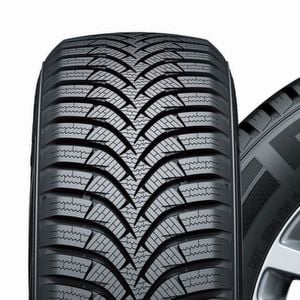Last Updated on 14.08.2024 by hrushetskyy
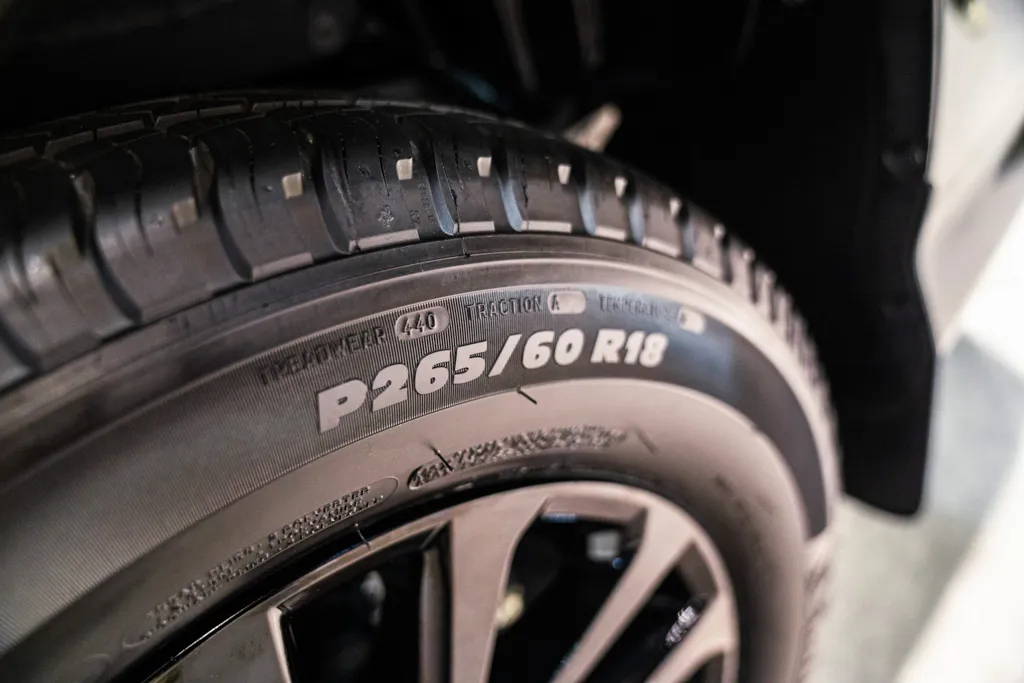
What exactly are those numbers on your tire, and why do they matter? This guide dives straight into what each segment of these cryptic figures represents, from tire dimensions to load capacity. Get ready to leave with the clarity needed to select tires that align with your vehicle’s safety and efficiency standards as we explore what the “numbers on tire mean.”
Tire size code: what is it and how to read it?
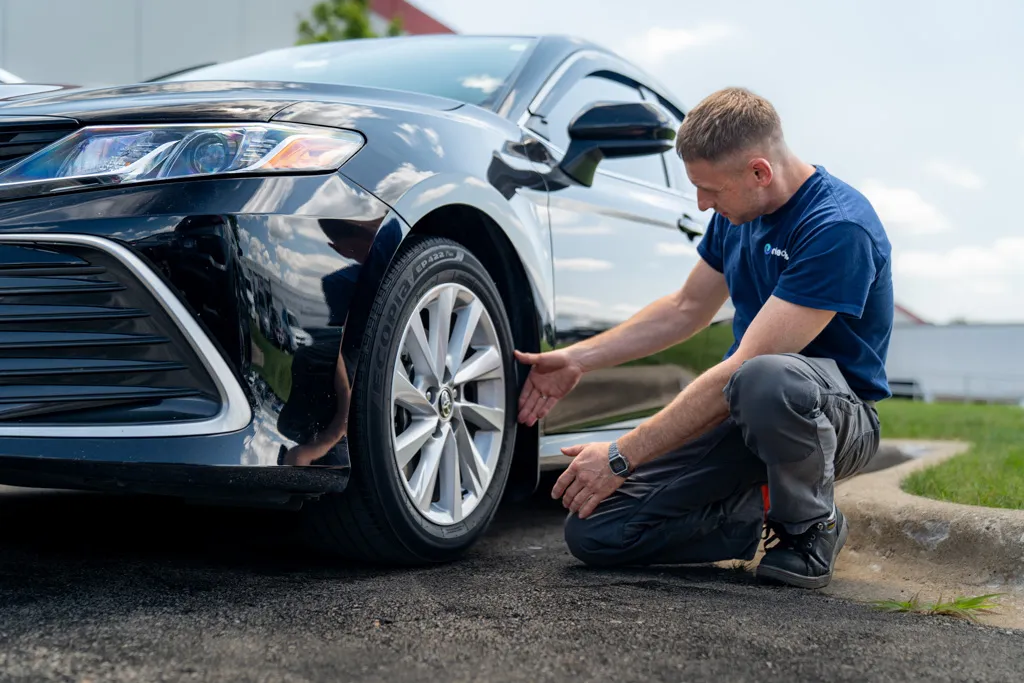
Tire size notation is a combination of letters and numbers that give you essential information about your passenger car tire. Typically found on the tire sidewall, owner’s manual, or driver’s side door jamb, these notations inform you about the tire type, width, aspect ratio, construction, and rim diameter. Learn how to read this alphabetic-numeric code, and you will always match your tires correctly with your vehicle’s specifications. And this is the key to your safety and car’s optimal performance! So, let’s dive in and look into the following notations:
- Tire type codes
- Section width
- Aspect ratio
- Carcass construction
- Rim diameter
- Load index and speed rating
Each element significantly contributes to selecting an appropriate tire for your car.
Understanding tire type codes
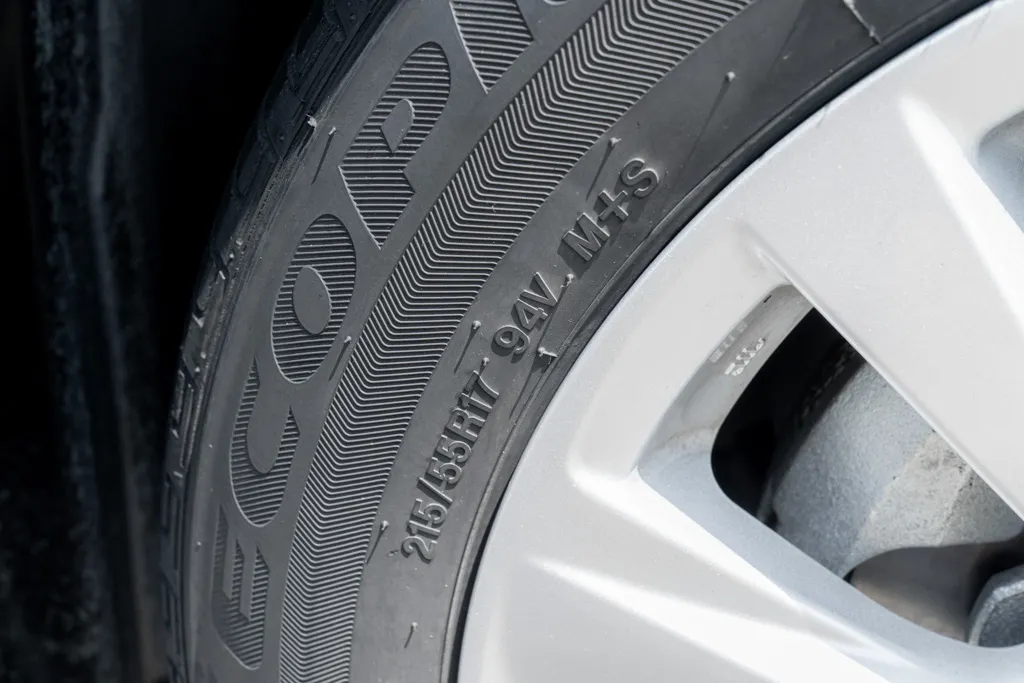
Tire type codes are the starting point in understanding tire size notation. They are encoded by a single letter or a combination of two letters that stand before the numeric code:
- P – Passenger tire (passenger vehicles: sedans, SUVs, light-duty pickups of ¼-½ ton load capacities, also known as passenger car tire)
- LT – Light truck tire (some SUVs, medium and heavy-duty pickups of ¾-1 ton load capacities, also known as light truck tires)
- ST – Special trailer tire for utility, passenger vehicles, and boat trailers
- T – Temporary (spare) tire that is temporarily used to get to a tire shop or mechanic for repair
- C – Commercial tire in the Euro-metric system designated for commercial vehicles like delivery vans and trucks. The letter is usually placed at the end of a numeric code
- No letter – Metric-sized tire (relevant for European and Asian markets mostly)
Section width
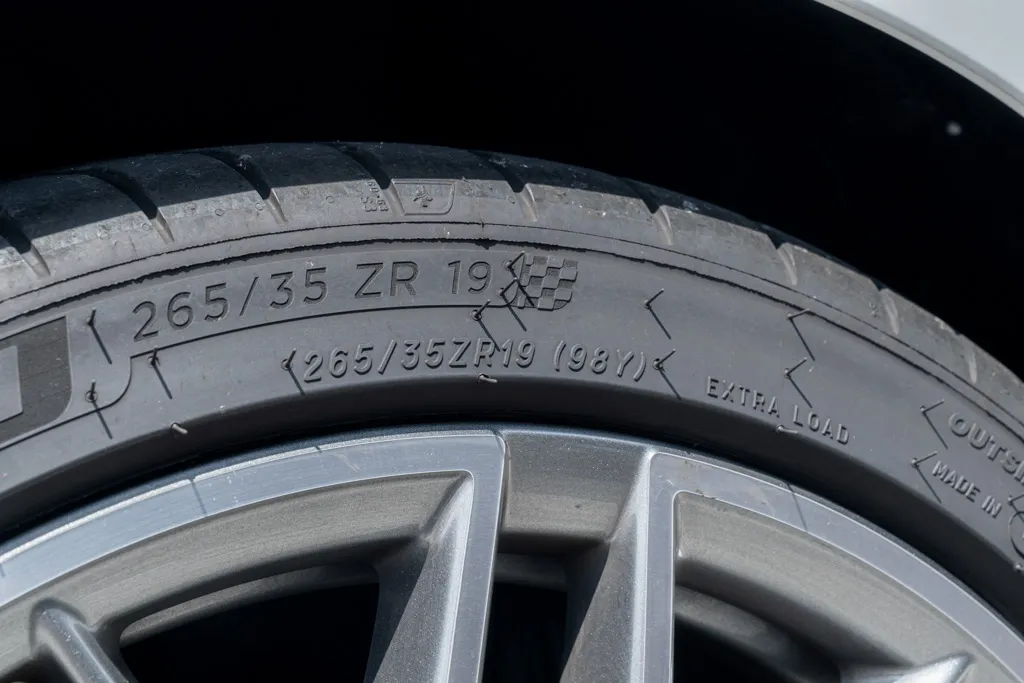
The first three digits represent the section width in the tire code and measure the tire’s width from its widest points, from the inner sidewall to the outer sidewall, in millimeters. Tire width can vary depending on the rim, so tire engineers mount the items on the recommended rim width while calculating.
You can convert the number into inches by dividing it by 25.4 or using a calculator. For example, the width of 205 millimeters is roughly 8 inches.
The section width impacts the tire’s road contact, affecting traction, handling, and overall vehicle stability. A wider tire generally offers better grip but may also increase rolling resistance, impacting fuel efficiency. Choosing the correct tire width directly affects the car’s performance and efficiency.
Aspect ratio
The aspect ratio is the next critical number in the tire size code, following the section width. It’s a tire’s height-to-width ratio, shown in percent. A 55 profile is 55% of the width, meaning the tire’s height (for a 205 mm width) is 112.75 mm, or 4.4”.
Sometimes, tires come without these tire numbers. The term “full-profile tire” refers to a tire with a high aspect ratio, often around 80%. This means the height of the tire’s sidewall is 80% of its width. These tires are generally used for vehicles requiring robust and comfortable rides. Example of a full-profile tire size: 11R24.5: This indicates an aspect ratio of approximately 80%, making it a full-profile tire
Tires with a three-digit ratio (in millimeters) can be found really rarely.
If a tire has an aspect ratio of 55 or less, it’s a low-profile tire, usually used for sports vehicles. They provide better grip and performance but wear faster. Learn more about low-profile tires.
This ratio impacts the tire’s performance characteristics, including ride comfort and handling. A lower aspect ratio typically means a shorter sidewall, which can enhance cornering stability and steering response but might result in a harsher ride.
A higher aspect ratio offers more cushion and a smoother ride but may compromise handling at high speeds.
Carcass construction
The carcass construction of a tire is a key factor in its performance and durability. This refers to the internal structure of the tire, primarily made up of layers of textile fiber cords bonded with rubber. These cords, known as the carcass ply, provide the tire with its strength and ability to withstand pressure.
There are three construction types:
- R – radial construction. The most modern type with the plies going radially to the circumference, under the proper angle. Such tires are also reinforced with steel belts. More than 98% of tires on the market are this type.
- “-“ or D – bias-ply (diagonal) construction. The oldest used type with the plies crisscrossing diagonally.
- B – bias-belt construction. This type is like bias-ply, with an extra belt reinforcing the tire. Two or more belts made of materials such as fiberglass or steel run circumferentially under the tread. These belts provide extra strength and stability to the tread area while giving more rigidity to the sidewall than traditional bias-ply tires.
NOTE: Some tires, mostly imported from Europe, contain the letters “F” after “R” in their codes. These tires have self-supporting, run-flat construction approved by the European Tyre and Rim Technical Organization (ETRTO).
High-speed tires have a ZR rating and often include additional reinforcements, such as full cap plies or belt edge strips, to enhance performance and durability. Ultra-high-performance tires may also feature fabric or steel cord reinforcements in the sidewalls to improve cornering stability and steering response.
Rim diameter
The rim diameter is indicated by the number following the aspect ratio and construction type in the tire code. For instance, in 205/55R16, the ‘16’ denotes that the tire is designed to fit a 16-inch wheel rim.
The most popular sizes (in inches) for passenger vehicles are 8”, 10”, 12”, 13”, 14”, 15”, 17”, 18”, 19”, 20”, 22”, 23”, 24”, 26”, 28”. Most passenger vehicles are equipped with these tires.
Tires with irregular rim diameters are often used for box vans, heavy-duty light trucks, and trailers. The tire numbers include 14.5”, 14.5”, 16.5”, 16.5”, and 19.5”. Such tires are for specific use and should not be mixed with regular tires.
Additionally, some tires use rim diameters in millimeters, but these are rare. Michelin PAX run-flat tires, which are limited Original Equipment (OE) tires in the US, use this system.
This measurement is essential for proper tire fitment. A mismatch between tire and wheel diameter can lead to poor handling and increased wear. That’s why we recommend maintaining the original equipment’s wheel diameter.
Load index and speed rating explained
The tire’s load index and tire’s speed rating are integral for managing your vehicle’s weight and anticipated speed. The load index indicates the maximum weight a properly inflated tire can safely carry, while the speed rating specifies the top speed the tire can sustain. Since 1991, it has been legally required for all tire manufacturers to add load index and speed rating data on all produced tires, except Z-rated tires.
Load index
The tire’s load index is a numerical code representing the maximum load a properly inflated tire can withhold. This number must be referenced against a load index chart to determine the specific load-carrying capacity. The tire’s load index numbers range from 70 to 126, with each numeric value corresponding to a certain carrying capacity shown in pounds at the U.S. tire market and in kilograms in Europe. Light Truck (LT) or Special Trailer (ST) tires have two load indexes: the first indicates load carrying capacity for single-wheel rear application, and the second for dual rear application.
Passenger tires usually have a load index between 70 and 124, ensuring they can handle various vehicle weights.
NOTE: Remember, these tire numbers show you how much you can load on one tire. If you want to learn the load capacity of the whole set, multiply the mass by 4. An index of 91 means that a single tire can withhold 1,356 pounds, so all four tires will carry a maximum load of 5,424 pounds, including the weight of the vehicle itself.
Speed rating
The tire’s speed rating indicates the maximum speed a tire can safely maintain under controlled conditions. This rating is represented by a letter, such as ‘H,’ for a maximum safe speed of 130 mph. The tire’s speed rating letters range from A to Y, each coinciding with the maximum speed a tire can handle. Speed ratings are determined through standardized tests and reflect the tire’s speed capability.
Higher speed ratings generally mean better handling and heat resistance at high speeds but may also result in a stiffer ride.
If the tire’s speed capabilities exceed the maximum limit (Y—186 mph), the load index and “Y” are found in the code.
NOTE: Tires with speed capacity over 149 mph (W, Y, Y) potentially contain “Z” before R (radial tire). Manufacturers producing tires with a speed capacity over 186 mph must add the speed indicator Z before R.
Types of tire size codes
Tire size codes are available in P-metric and Metric (or Euro-metric) classifications.
Metric
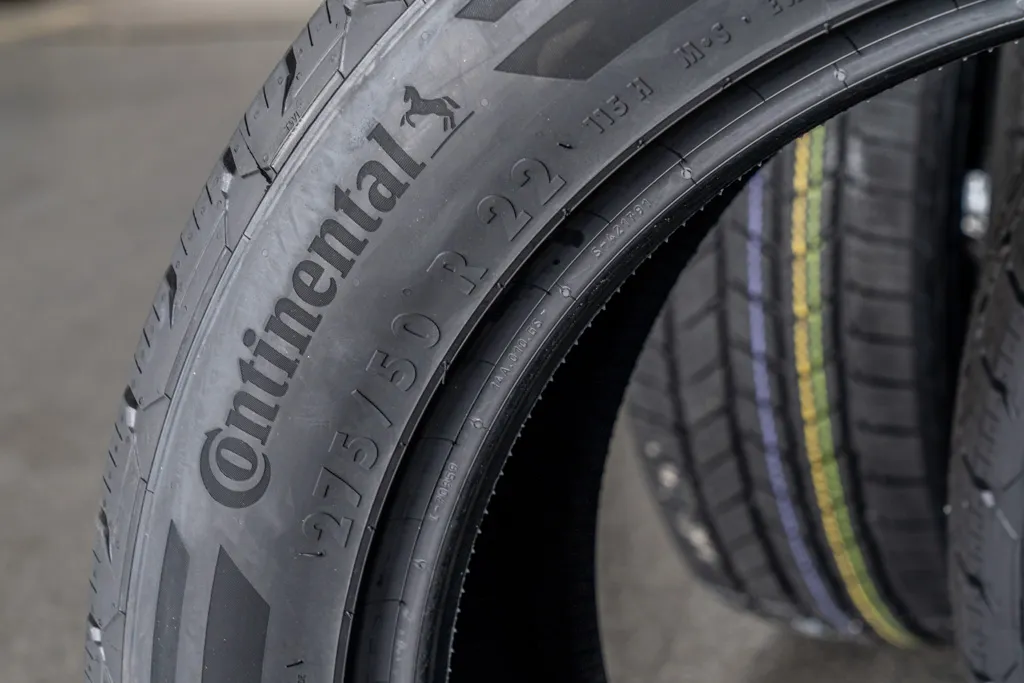
Also called Euro-metric, this is an approved standard. The numeric sequence starts with the section width (225) in millimeters without preceding letters. This method of presenting the tire width was adopted in Europe in the 1960s and later became the U.S. standard. However, the states have adopted a different system.
Engineers determine the standard based on the load and dimensional characteristics of the vehicles. As you can see, the Metric and P-metric systems differ in load and inflation standards.
P-metric
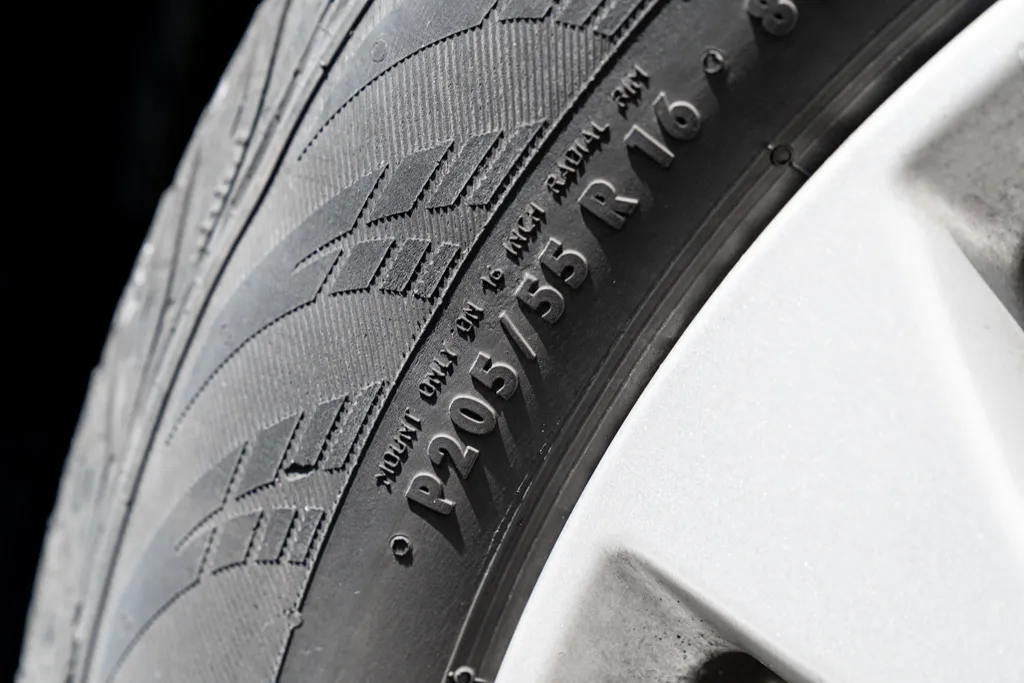
The P-metric system was adopted in the 1970s and is the usual choice for passenger vehicles in the United States. Tires for SUVs, light-duty pickups, and station wagons also qualify under this system. Engineers calculate tire load capacity according to the formula that uses the tire’s size and the air pressure within it. As a result, vehicle manufacturers can construct new vehicles to fit the formula-based tires. The P-metric standard is approved by the Tire and Rim Association (T&RA).
NOTE: Both systems use the same sizes and dimensions, so it’s possible to interchange them in axle pairs or sets. Metric-sized tire numbers include greater load capacities: changing from P-metric to metric is no problem. However, if you go for vice versa, make sure to buy P-metric tires with a bigger load capacity. Sometimes, pressure adjustments can solve the problem, but they may also sacrifice the vehicle’s handling and performance.
In addition to these, motorcycle tires also have specific size codes, which we will explore next.
Radial construction and tire performance
Radial construction has revolutionized tire performance, offering advantages over older tires. Radial tires feature steel belts running at a 90-degree angle to the tread centerline, enhancing maneuverability and high-speed performance. This construction allows the tread and sidewall to function independently, providing better traction and cornering ability.
The steel belts add to the tire’s toughness, making it more resistant to wear and tear. Additionally, radial tires generate less heat at high speeds, improving durability during long journeys and highway travel. These benefits make radial tires a preferred choice for both passenger vehicles and light trucks.
Tire sidewall insights

The tire sidewall harbors a wealth of information beyond just the size notation. Traction grades, indicated as AA, A, B, and C, reveal the tire’s wet traction performance under controlled conditions, with AA being the highest. Temperature ratings indicate the tire’s ability to resist heat under normal operating conditions.
The “DOT” marking signifies the tire’s compliance with safety standards and includes codes that identify the manufacturer and production details. These insights help understand the tire’s performance and suitability for various conditions.
DOT Code
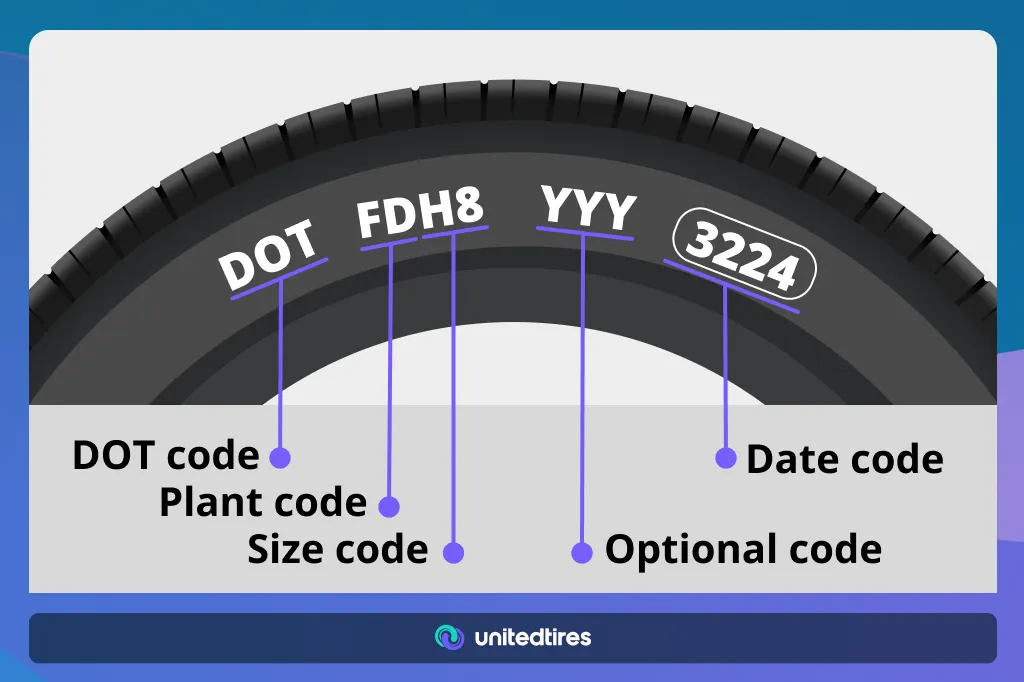
The DOT code on a tire confirms its compliance with US safety standards, a requirement for all tires sold in the country. This code includes vital information such as:
Plant code
Every tire plant in the world has a two- or three-digit, two-or three-letter, or alphabetic-numeric code. The Tire Safety Group list contains these tire numbers and letters. This information is important for those who want to know whether the tire was made in the US. Please note that some of the facilities on the list may have been closed.
Size code
The National Highway Traffic Safety Administration (NHTSA) does not interpret size codes. However, the Rubber Manufacturers Association has a suggested code deciphering list. Some of the data may be inaccurate, as this is an estimate, and some foreign-based manufacturers may use another system.
Optional code
The next 3-4 tire numbers are an optional code for the manufacturer. The code should include the category of the tire, its construction, and tread pattern. Tire companies use this to recall defective tires. By the way, you can check whether your tire company has recalled your tire model here.
Date code
The last four digits of TIN are the week and year of the tire’s manufacture. The sequence 4313 means the tire was made in the 43rd week of 2013. The newer the tire you buy, the better it is, as rubber deteriorates even if the tire has never been mounted. Tire manufacturers recommend replacing tires after they turn 6-10 years old. You can learn more about the code from this post.
NOTE: According to the US Government Publishing Office, all tire plants will receive new three-symbol codes they must start using by April 13, 2025.
Additional markings
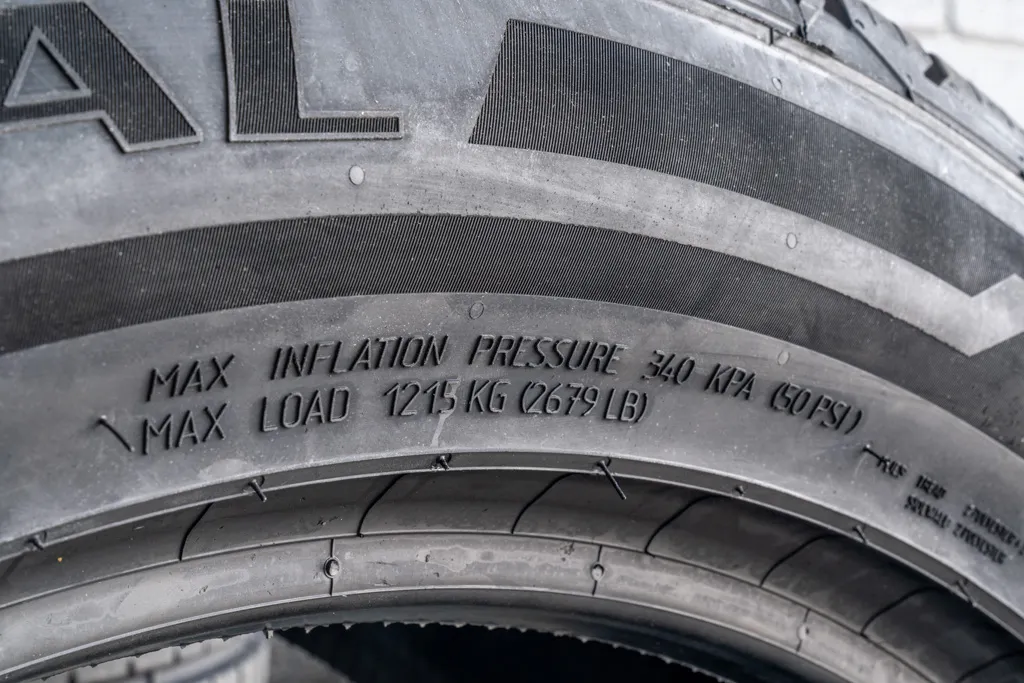
Tire numbers can also tell you about the following:
- Tire construction materials
- Maximum inflation and load
- Whether the tire is OE
- Other.
Tire construction materials
In addition to the codes, you can also find deciphered data on the number of plies and their materials. The tread and sidewall may contain different layers, so the information may be useful if you want a particular tire.
The data doesn’t show rubber compounds, only the main materials of the plies. These may be steel, fiberglass, rayon, polyester, etc.
Maximum inflation and load
- Maximum inflation shows how much cold pressure a tire needs to hold the maximum load.
- Maximum load shows how much weight a cold tire with proper maximum inflation can carry.
These tire numbers do not represent the recommended inflation and load. So, when mounting and inflating tires, make sure your main guide is your vehicle’s owner’s manual. The information is also on the tire placard in the vehicle. Also, note that exceeding the maximum air pressure and load dramatically endangers you and the car.
OE manufacturer markings
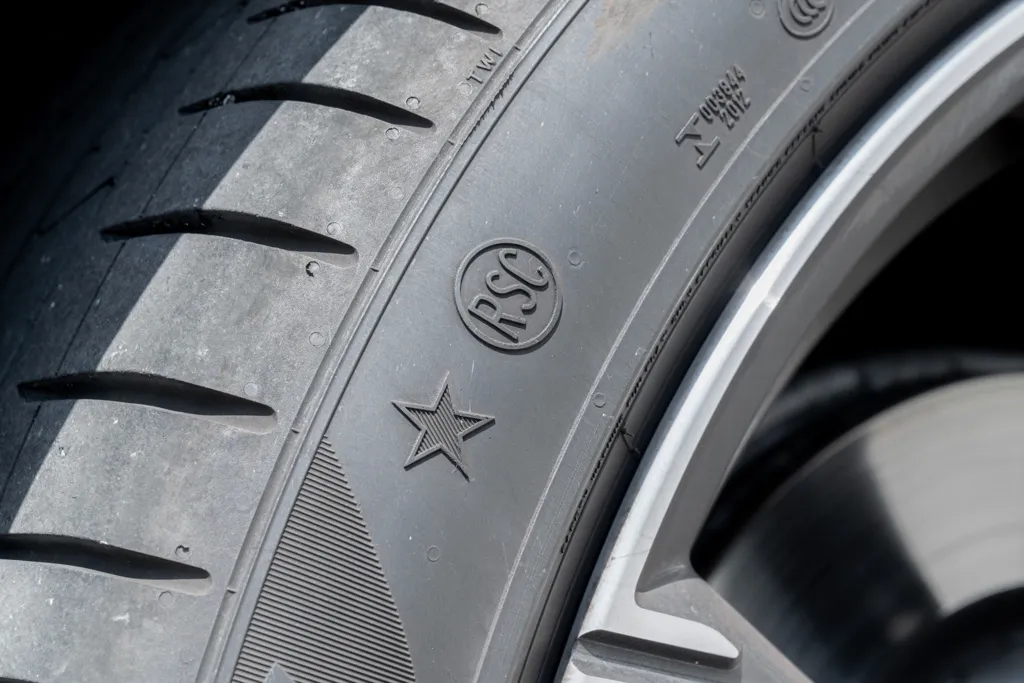
The Original Equipment tire is what the vehicle’s manufacturer recommends for a particular car. They partner with tire companies to create tires that are most adequately suited to certain car models.
Here are some examples of OE tire numbers and markings:
- AO: Audi Original. Indicates tires specifically designed and approved by Audi for their vehicles.
- AOE: Audi Original Extended. These are run-flat tires specifically approved for Audi vehicles, providing extended mobility.
- RO1: Audi Quattro Specification. Indicates tires that meet the specific requirements of Audi’s Quattro all-wheel-drive system.
- MO: Mercedes Original. This marking signals that Mercedes-Benz designed and approved the tires for their vehicles.
- B1: Bentley Specification. These tires are specifically approved and tailored for Bentley vehicles.
- RSC: Runflat System Component. Specific for BMW, indicating that the tire is designed to be run-flat and meets BMW’s specifications.
- ✩ (Star-marked): BMW Specification. Indicates tires that are specifically designed, tested, and certified for BMW vehicles.
Other
Other tire numbers and markings include:
- M+S/M&S — Mud and Snow tires. The name speaks for itself: these tires are recommended for use in mud and snow
- M+T/M&T — Mud and Terrain tires. Provide better traction and self-cleaning in mud and rocks
- 3PMSF — 3-Peak Mountain Snowflake symbol. The tire is designated for winter and is recommended for severe snowy conditions
- BSW/WSW — Black or While Sidewall
- TL/TT — Tubeless or Tube-Type tires
- SFI/SFO — Asymmetric tires: with side facing inwards or outwards
- LL/SL/XL — Light, Standard, and Extra loads
- RF — Reinforced tires
- RFT — Run-flat tires allow drivers not to use spare tires.
Navigating through uniform tire quality grading (UTQG)
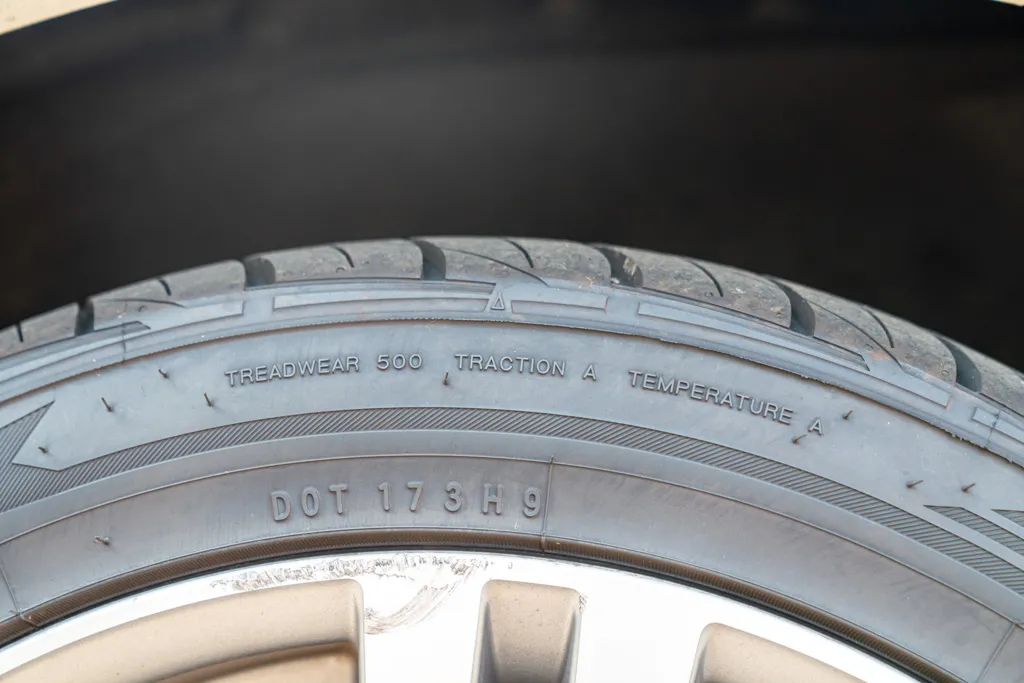
The Uniform Tire Quality Grading (UTQG) system provides comparative performance ratings for tires, which government-specified tests conducted by tire manufacturers established. These ratings assist consumers in making knowledgeable decisions when buying tires. The UTQG system includes several ratings, including:
Treadwear
Tire numbers after the word “Treadwear” estimate how long the given tire will last compared to the reference tire. The latter has a rating of 100; all other tires that go for a test get ratings in relation. So, a tire with a rating of 300 may last three times longer than the reference.
There are tires with lower ratings, like 80 in sports tires. Their rubber compounds are softer and provide better grip at higher speeds, but they wear faster. The rating can go up to 650-700 and even higher for harder tires that wear longer yet provide a rougher ride.
The test itself is a 400-mile test loop that a vehicle convoy runs (with both test tire and Course Monitoring Tire (CMT) mounted) for 7,200 miles. Every 800 miles, specialists should check inflation rates and rotate the tires if necessary. The test tire’s tread and the CMT tread are measured during and at the end of the test, and the test item gets its tire numbers.
Traction
One or two letters after the respective word show how well the tire provides traction on wet surfaces. There are AA, A, B, and C ratings, with the best AA and the worst (relatively) C. It doesn’t evaluate hydroplaning resistance or braking, though.
Temperature
A letter after the respective word indicates the limit of temperature that the tire can safely dissipate. There are A, B, and C ratings, where A is the best, and C is relatively the worst. The A grade means the tire can withstand speeds over 115 mph. The B grade shows the tire withstands speeds between 100 and 115 mph. The C grade means the tire is still safe at speeds between 85 and 100 mph.
More on the UTQG
UTQG is the system that is mandatory for most passenger cars in the US. Light-truck, winter, spare, trailer tires, and those with rim diameters of less than 12” don’t require the ratings.
The problem with this system is that manufacturers test their tires under controlled conditions. So, the effectiveness of the tire under irregular or even simple street conditions may be unexpected. The rule of thumb is that A and AA are the best; the higher the treadwear rating, the better. However, you should also choose tires depending on your needs, including the ride’s comfort and grip.
Why do tire numbers matter?

Tire numbers link the vehicle to the road, influencing safety, braking, handling, steering, and ride quality. They provide essential information about the tire’s age, which is critical since tires weaken significantly after six years, regardless of mileage.
Knowing tire numbers helps identify the manufacturing details and ensure the tires’ suitability for your vehicle, enhancing safety and performance.
Frequently Asked Questions
What does the ‘R’ in a tire size mean?
The ‘R’ stands for Radial, indicating that the tire’s internal ply cords are oriented in a radial direction, from one bead to the other, perpendicular to the rotation direction.
How do I know the width of my tire?
The tire width is represented by the first three digits in the tire code and is measured in millimeters. For example, a tire coded as 205/55R16 has a width of 205 millimeters.
What is the significance of the load index?
A tire’s load index signifies the maximum weight it can bear when inflated to its highest pressure. The tire’s load index numbers range from 70 to 126, with each numeric value corresponding to a certain carrying capacity.
The load index is listed in pounds for U.S. passenger car tires, while it is listed in kilograms and sometimes pounds for European tires.
Light Truck (LT) or Special Trailer (ST) tires have two load indexes: the first number indicates load-carrying capacity for a single-wheel rear application and the second number for a dual rear application. This is important for determining the tire’s suitability for a particular vehicle or application. This number must be referenced against a load index chart to determine the specific load-carrying capacity.
How important are speed ratings?
Speed ratings specify the maximum speed a tire can safely sustain under controlled conditions, which affects vehicle safety and performance. The tire’s speed rating letters range from A to Y, each coinciding with the maximum speed a tire can handle. Higher speed ratings generally mean better handling and heat resistance at high speeds.
Why should I care about the DOT code?
The DOT code confirms that the tire meets US safety standards and includes information about the manufacturing plant, tire size, and date of manufacture. This helps ensure the tire’s safety and identify its age.
Share the Knowledge
